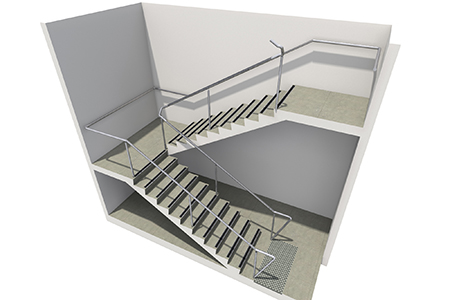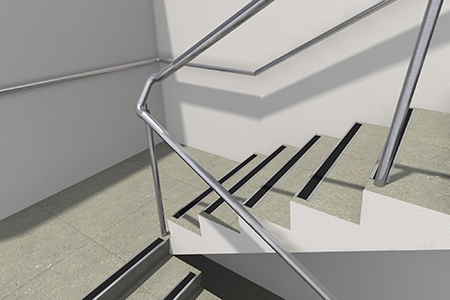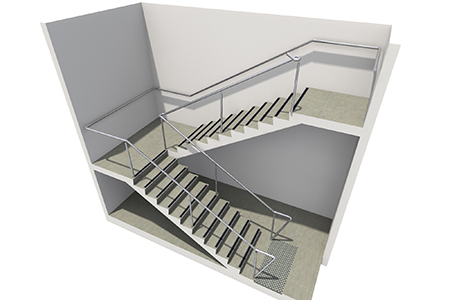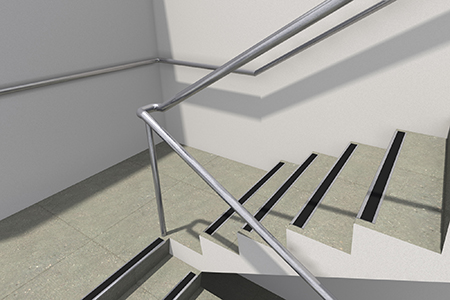As a disability access consultancy we get the opportunity to review a lot of architectural drawings, which we love to do. The main reason we get to do this is to undertake desktop reviews of architectural designs to ensure that they comply with all access requirements of the Building Code of Australia (BCA) and the Premises Standards.
As most of the followers of our blog posts know, there were major changes to the access provisions of the BCA introduced in 2011 and some of these requirements were adopted very quickly, such as ambulant toilets, new accessible car parking requirements, increased accessible toilet room sizes, slip resistance, etc, but others not so.
One of these requirements that continues to be a common non-compliance in designs is the internal handrail transition over intermediate (or mid) landings on stairways.
The problem we regularly see is that the first ascending riser needs to be setback into the next flight of stairs the distance of one tread (or going). This ensures that the internal handrail transitions around over the landing and maintains a consistent height.
AS1428.1-2009 Clause 11.2(c) says that “Handrails shall have no vertical sections and shall follow the angle of the stairway nosings, as shown in Figure 28(b)”.
AS1428.1-2009 also says in Clause 12(e) that “The height of the top of the handrail, measured in accordance with item (d), shall be consistent through the ramp (or stairs) and at any landing”.
If a stair isn’t designed in this way, then the internal handrail will have a steeply angled section, which could result in a near vertical section of handrail to make up the height of the first rise or step in this flight.


The only way for the internal handrail to comply when the first ascending riser is not set back the distance of one tread (or going) is to increase the depth of the stair landing to allow the handrail at the top of the first flight to extend the distance of one going, before turning 180 degrees and going up the second flight. This is another method to keep the handrail at a consistent height.


The above details are based on AS1428.1-2009, this is for a 180 degree turn, but the same principal applies for a 90 degree turn as shown below.